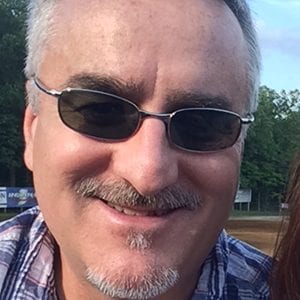INDIANAPOLIS — They were three of the loudest race-track nights I remember, even after the checkered flag shut down the engines.
The source of the noise simply shifted from speedway to grandstands and it took a long time to fade. No one in the place wasn’t happy for the guy in victory lane, whose name on all three occasions was Ray Miller.
This was in the early 1980s when Connecticut’s Stafford Motor Speedway was the weekly epicenter of NASCAR modified racing. One annual highlight was the Ferrara 100, always run in the dead of summer, always drawing huge crowds.
Miller won it three years straight and in high style: He outran Greg Sacks and Richie Evans in ’80, topped Reggie Ruggiero and Evans in ’81, and held off Jimmy Spencer in 1982.
So Miller was a terrific racer. But, by his own choice, he was never more than a weekend warrior.
He passed his weekdays as a purchasing agent for Pratt & Whitney, the aircraft engine manufacturer and, for decades, Connecticut’s largest employer.
Ray’s biggest score came in 1981 when he beat Geoff Bodine to the checkers in a 300-lapper at Thompson Speedway, another Connecticut track. Thompson’s race director in that period was legendary Bill Slater, a retired star from the coupe era.
Like Miller, Slater was a Pratt & Whitney man in his driving days, steering forklifts on the graveyard shift. His workweek began on Sunday night, so even after his big 1965 National Open score at Pennsylvania’s Langhorne Speedway, he had to hurry home.
Consider this a shout-out, a tip of the hat, to Slater and Miller and all the outstanding racers who have led similar dual lives, punching the throttle on weekends and, come Monday, punching a time clock.
Take Joe Gosek, a hometown hero at New York’s Oswego Speedway. It’s hard to imagine anything gutsier than packing a flyweight, big-block supermodified into a tricky Oswego corner, and Gosek did it fiercely enough to earn a couple of track titles and three victories in the prestigious International Classic.
Yet, away from the applause and the roar of that big block, he was the picture of calm precision, laboring as a machinist.
Another machinist who doubled as an open-wheel icon was Arizona’s Lealand McSpadden. You’d need a big map and a lot of push pins to mark all the tracks where Lealand raced, but he always found his way back to Tempe and the shop job he held for something like 40 years.
My fondest mental photographs of Jimmy Hensley come from the 1970s, the heyday of NASCAR’s busy late model sportsman division. But I have no doubt that Jimmy’s banker liked him better later, when his combined Winston Cup, Busch Series and Craftsman Truck earnings amounted to just shy of $4 million.
Around Ridgeway, Va., his hometown, a driver’s share of that loot would qualify as a comfortable living. But Hensley, grounded and wise, never gave up his full-time gig wheeling a fuel oil truck.
Speaking of trucks: In Pennsylvania’s Lehigh Valley, plenty of Dave Kelly’s fellow employees at the huge Mack assembly plant watched him moonlight as a Reading Fairgrounds modified star and a five-time URC sprint car champ.
Across the ’60s and ’70s, a barrel-chested driver of modifieds, supers, roadsters and sprint cars was carrying trophies out of tracks all over Indiana. But he didn’t figure that a racing income was dependable enough for a man with children at home, so Bob Kinser carried on his work as a stonemason.
One of his kids, son Steve, grew up to be the most successful sprint car driver any of us will likely ever see.
In Greater St. Louis, blue-collar racers flourished. Modified champion Don Klein was a maintenance man for a lime-mining operation in his native Ste. Genevieve, Mo. At quitting time on Fridays, he’d fetch his trailer and his modified, load the whole thing onto a ferry and cross the Mississippi River to Modoc, Ill.
That quiet ride left Dandy Don feeling nice and relaxed when it came time to whip the field at Belle-Claire Speedway.
And 25 miles north of Belle-Claire, open-wheel standout Wilbur “Wib” Spaulding sometimes had to cut short his Tri-City Speedway victory celebrations so he could hustle to his night-shift job at nearby Granite City Steel.
But the drivers with the coolest civilian gigs, hands down, were the sprint car racers who lived in and around Los Angeles. Filmmaking is one of that area’s main industries, so you might have found an Ascot Park lead foot like Eddie Wirth working as transportation captain at one location, and another, like Mike Sweeney, helping set up the lighting for a different shoot.
And was there ever a part-time racer who loved his day job more than another Ascot regular, Jeff Heywood?
Heywood earned a paycheck as a fabricator at All American Racers in Santa Ana, which meant that after spending his Saturday nights throwing dirt at one of America’s premier short tracks, he began his week by saying hello to a boss named Dan Gurney.
Bless all the weekend warriors, then, now and forever. They sell tickets and they occasionally topple the professionals.
They are the backbone of all that we love.
